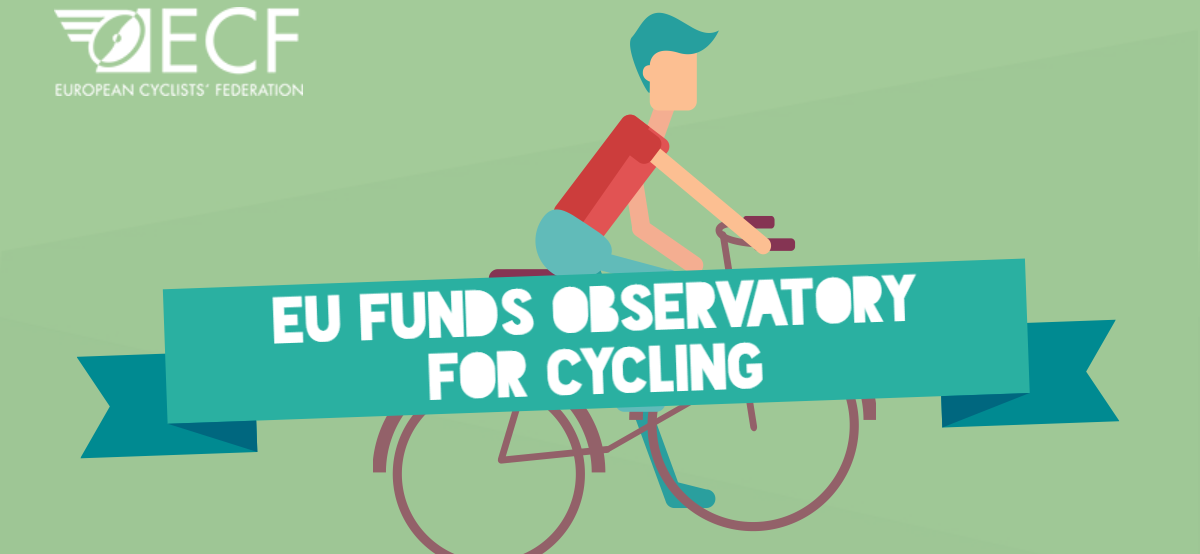EU Funds Observatory for Cycling
The aim of the ECF’s EU Funds Observatory for Cycling is to help you find opportunities for using EU funds to invest in cycling-related projects in your area. This tool will enable you to search for all the relevant EU programmes and identify where there is funding available.
The Observatory provides an overview of over 200 different programming documents covering the whole of the 2014-2020 EU financial period. For each document we have checked both the wording, to highlight useful references, and the funding distribution to estimate how much could potentially be spent on cycling-related projects.
While we hope that you will find the Observatory useful to provide an overview of the most relevant programmes for your area, we always encourage you to check the actual documents for yourself (we have provided the links to make this easier) and, if necessary, speak to the authority managing the programme.
Of course, identifying funding opportunities is only the beginning of the process. The next step is to put together successful applications and over the coming years the ECF will be providing more tools, advice and suggestions through this section of the website to help you along the way. We have already established a best practice database to bring together examples of successful EU-funded cycling-related projects from around Europe.
Use the links below to search for funding programmes or examples of best practice.
More information
Over the past few months, the ECF has been checking all available programming documents to find out what references to cycling have been included. This work included the scanning of relevant EU regulations:
- Partnership Agreements – a general agreement between the EU and each member state setting out in broad terms what EU funds should be spent on);
- Operational Programmes (OP) – describe in more detail the priorities, objectives and eligible activities in each member state and/or region and therefore set the guidelines for the Calls for proposals that will follow.
Of course, it will not be possible to identify exactly how much the EU will invest in cycling-related measures during the current financial period until it comes to an end; by using the OPs however we can get a relatively good indication of the opportunities that exist.
As part of the scan of the programming documents, the ECF has categorised the references to cycling and estimated the resources that are likely to be available. We identified three categories of references:
- Explicit reference – “cycling, bicycle, cycling infrastructure, cycling industry” are listed among the eligible actions. In the best cases, the OP even includes a dedicated cycling fund and/or the estimated outputs include cycling (e.g. km of new bike path).
- Implicit reference – cycling-related measures are eligible under different headings, such as “sustainable transport / mobility, green infrastructure, green vehicles, soft mobility, urban transport, sustainable (transport) modes, multimodality, sustainable tourism”. Although cycling was not explicitly-mentioned in the actions, it clearly fits with the proposed objectives. Nevertheless, we used a conservative estimation, taking into account the potentially eligible activities.
- Indirect reference or connection to cycling – covers situations where broader themes are mentioned, such as “land transportation, roads, tourism, SME development, training and campaign, vehicle industry”. In these circumstances we took an extremely conservative approach and included only the possible costs of integrating some cycling-related components into generally ‘non-cycling’ projects.
Based on the work that we have undertaken to establish this tool we estimate that 1.325 billion Euros of EU funds can be used for cycling between 2014 and 2020 based on the explicit references included in the current versions of the programming documents.
If we take into account the implicit and indirect references as well, cycling related measures possibly can absorb 2.041 billion Euros of EU subsidies. This is more than twice or, in case of all possibilities (references), more than three times as much as was available in the previous period.
For more detailed information please view the ECF publication Cycling for Growth: Using European funds for cycling.

